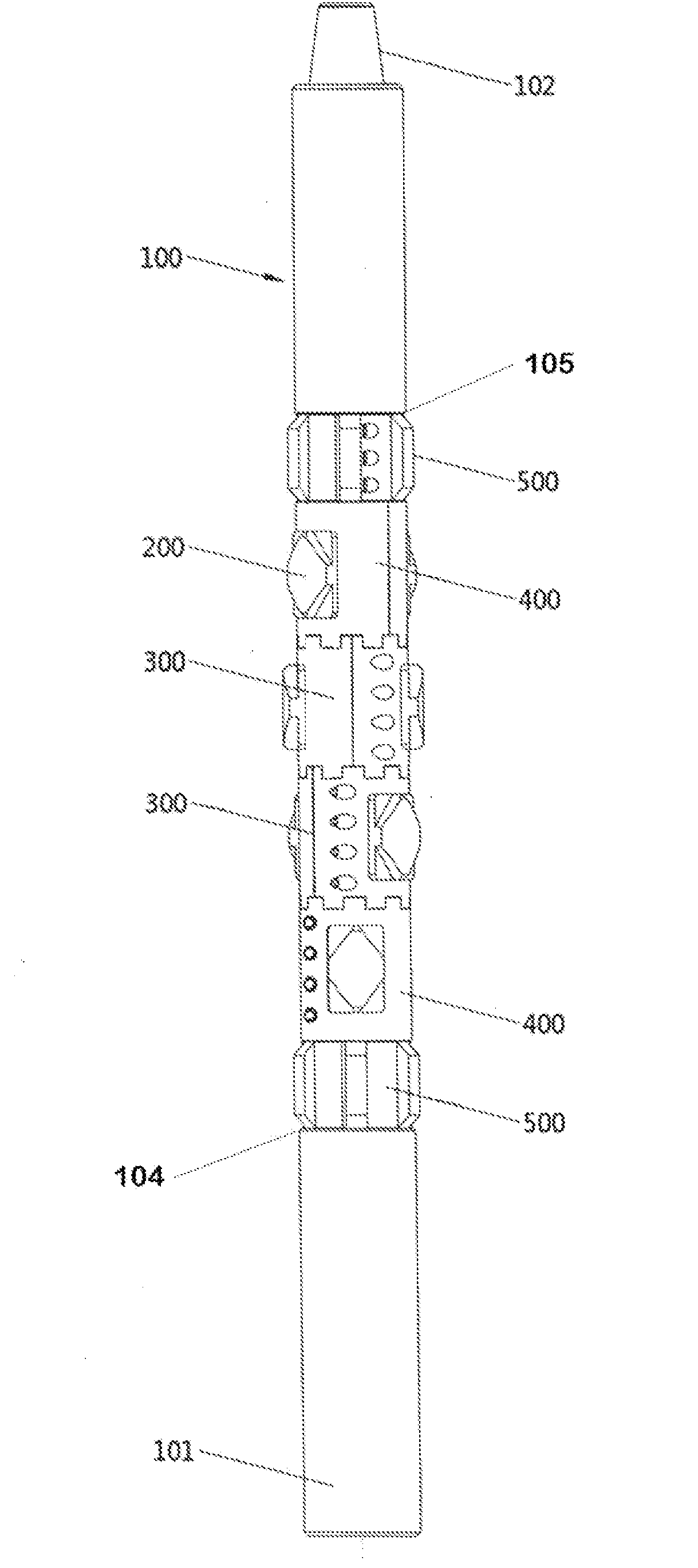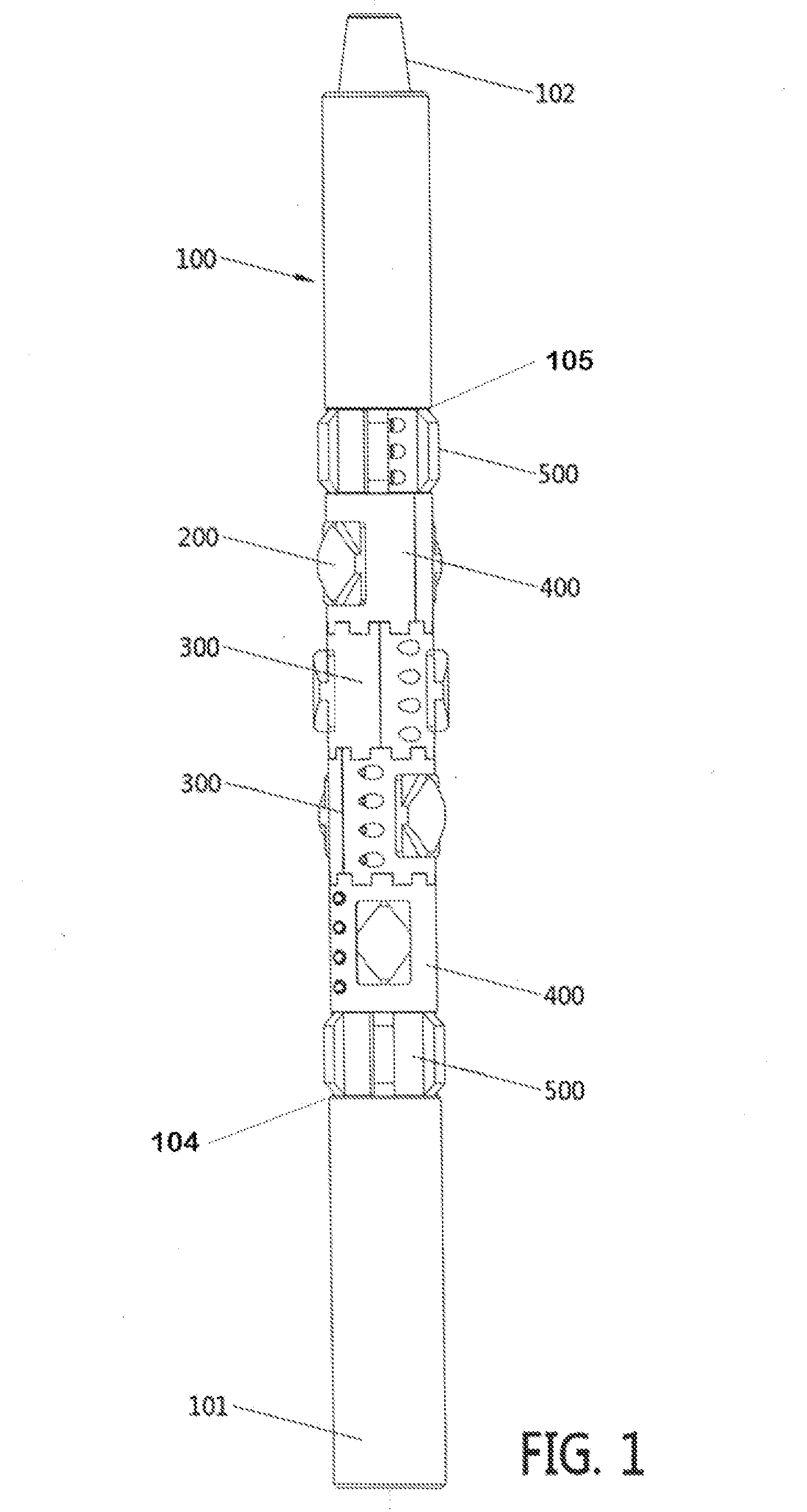Non-Rotating Wellbore Casing Scraper
a scraper and wellbore technology, applied in the direction of fluid removal, wellbore/well accessories, earthwork drilling and mining, etc., can solve the problems of reducing well efficiency, affecting the operation of the well, so as to facilitate scraping and scraping. , the effect of sacrificing the non-rotating utility of the assembly
- Summary
- Abstract
- Description
- Claims
- Application Information
AI Technical Summary
Benefits of technology
Problems solved by technology
Method used
Image
Examples
Embodiment Construction
[0021]FIG. 1 shows a longitudinal side view of the casing scraper assembly (10) embodying the disclosed invention. Casing scraper assembly (10) is comprised of a longitudinally extending tubular base or tool body (100) with a longitudinally extending, array of interlocked, blade carriers (300) and (400), each housing a plurality of diamond-shaped symmetrical scraper blades (200), and a plurality of centralizers (500). The blade carriers (300) and (400), each housing blades (200), and the centralizers (500) are mounted to freely rotate axially around tool body (100) independent of the tool body rotation imparted by the drillstring. Blade carriers (300) and (400) are axially oriented around body (100) such that blades (200) are indexed or staggered so that they are not in longitudinal alignment with each other. Centralizers (500) also freely rotate axially around tool body (100) independent of the tool body rotation to keep the casing assembly (10) centralized within the wellbore duri...
PUM
 Login to View More
Login to View More Abstract
Description
Claims
Application Information
 Login to View More
Login to View More - R&D
- Intellectual Property
- Life Sciences
- Materials
- Tech Scout
- Unparalleled Data Quality
- Higher Quality Content
- 60% Fewer Hallucinations
Browse by: Latest US Patents, China's latest patents, Technical Efficacy Thesaurus, Application Domain, Technology Topic, Popular Technical Reports.
© 2025 PatSnap. All rights reserved.Legal|Privacy policy|Modern Slavery Act Transparency Statement|Sitemap|About US| Contact US: help@patsnap.com



